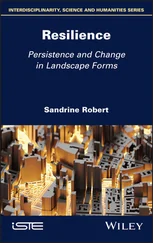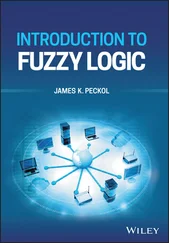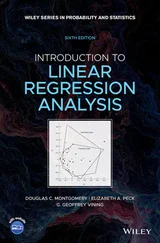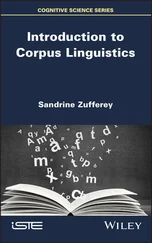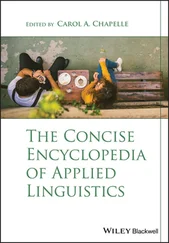Sandrine Zufferey - Introduction to Experimental Linguistics
Здесь есть возможность читать онлайн «Sandrine Zufferey - Introduction to Experimental Linguistics» — ознакомительный отрывок электронной книги совершенно бесплатно, а после прочтения отрывка купить полную версию. В некоторых случаях можно слушать аудио, скачать через торрент в формате fb2 и присутствует краткое содержание. Жанр: unrecognised, на английском языке. Описание произведения, (предисловие) а так же отзывы посетителей доступны на портале библиотеки ЛибКат.
- Название:Introduction to Experimental Linguistics
- Автор:
- Жанр:
- Год:неизвестен
- ISBN:нет данных
- Рейтинг книги:4 / 5. Голосов: 1
-
Избранное:Добавить в избранное
- Отзывы:
-
Ваша оценка:
- 80
- 1
- 2
- 3
- 4
- 5
Introduction to Experimental Linguistics: краткое содержание, описание и аннотация
Предлагаем к чтению аннотацию, описание, краткое содержание или предисловие (зависит от того, что написал сам автор книги «Introduction to Experimental Linguistics»). Если вы не нашли необходимую информацию о книге — напишите в комментариях, мы постараемся отыскать её.
Introduction to Experimental Linguistics — читать онлайн ознакомительный отрывок
Ниже представлен текст книги, разбитый по страницам. Система сохранения места последней прочитанной страницы, позволяет с удобством читать онлайн бесплатно книгу «Introduction to Experimental Linguistics», без необходимости каждый раз заново искать на чём Вы остановились. Поставьте закладку, и сможете в любой момент перейти на страницу, на которой закончили чтение.
Интервал:
Закладка:
Table of Contents
1 Cover
2 Title page
3 Copyright First published 2020 in Great Britain and the United States by ISTE Ltd and John Wiley & Sons, Inc. Apart from any fair dealing for the purposes of research or private study, or criticism or review, as permitted under the Copyright, Designs and Patents Act 1988, this publication may only be reproduced, stored or transmitted, in any form or by any means, with the prior permission in writing of the publishers, or in the case of reprographic reproduction in accordance with the terms and licenses issued by the CLA. Enquiries concerning reproduction outside these terms should be sent to the publishers at the undermentioned address: ISTE Ltd 27-37 St George’s Road London SW19 4EU UK www.iste.co.uk John Wiley & Sons, Inc. 111 River Street Hoboken, NJ 07030 USA www.wiley.com © ISTE Ltd 2020 The rights of Christelle Gillioz and Sandrine Zufferey to be identified as the authors of this work have been asserted by them in accordance with the Copyright, Designs and Patents Act 1988. Library of Congress Control Number: 2020943938 British Library Cataloguing-in-Publication Data A CIP record for this book is available from the British Library ISBN 978-1-78630-418-6
4 Preface
5 1 Experimental Linguistics: General Principles 1.1. The scientific process 1.2. Characteristics of experimental research 1.3. Types of experiment in experimental linguistics 1.4. Advantages and disadvantages of experimental linguistics 1.5. Where to access research on experimental linguistics 1.6. Conclusion 1.7. Revision questions and answer key 1.8. Further reading
6 2 Building a Valid and Reliable Experiment 2.1. Validity and reliability of an experiment 2.2. Independent and dependent variables 2.3. Different measurement scales for variables 2.4. Operationalizing variables 2.5. Choosing a measure for every variable 2.6. Notions of reliability and validity of measurements 2.7. Choosing the modalities of independent variables 2.8. Identifying and controlling external and confounding variables . . . . 2.9. Conclusion 2.10. Revision questions and answer key
7 3 Studying Linguistic Productions 3.1. Differences between language comprehension and language production 3.2. Corpora and experiments as tools for studying production 3.3. Free elicitation tasks 3.4. Constrained elicitation tasks 3.5. Repetition tasks 3.6. Conclusion 3.7. Revision questions and answer key 3.8. Further reading
8 4 Offline Methods for Studying Language Comprehension 4.1. Explicit tasks 4.2. Implicit tasks 4.3. Conclusion 4.4. Revision questions and answer key 4.5. Further reading
9 5 Online Methods for Studying Language Comprehension 5.1. Think-aloud protocols 5.2. Using time as an indicator of comprehension 5.3. Priming 5.4. Lexical decision tasks 5.5. Naming tasks 5.6. Stroop task 5.7. Verification task 5.8. The self-paced reading paradigm 5.9. Eye-tracking 5.10. The visual world paradigm 5.11. Conclusion 5.12. Revision questions and answer key 5.13. Further reading
10 6 Practical Aspects for Designing an Experiment 6.1. Searching scientific literature and getting access to bibliographic resources 6.2. Conceptualizing and formulating the research hypothesis 6.3. Choosing the experimental design 6.4. Building the experimental material 6.5. Building the experiment 6.6. Data collection 6.7. Ethical principles 6.8. Conclusion 6.9. Revision questions and answer key 6.10. Further reading
11 7 Introduction to Quantitative Data Processing and Analysis 7.1. Preliminary observations 7.2. Raw data organization 7.3. Raw data processing 7.4. The concept of distribution 7.5. Descriptive statistics 7.6. Linear models 7.7. Basic principles of inferential statistics 7.8. Types of statistical effects 7.9. Conventional procedures for testing the effects of independent variables 7.10. Mixed linear models 7.11. Best-practices for collecting and modeling data 7.12. Conclusion 7.13. Revision questions and answer key 7.14. Further reading
12 References
13 Index
14 End User License Agreement
List of Illustrations
1 Chapter 2 Figure 2.1. Illustrations of nominal, ordinal, interval and ratio scales
2 Chapter 4 Figure 4.1. Examples of situations presented in Coventry et al. (2001)
3 Chapter 5 Figure 5.1.Example of fictitious steps involved in simple (a) or choice (b) rea... Figure 5.2.Illustrations of eye movements during reading. The circles correspon...
4 Chapter 6 Figure 6.1.Diagram of the operational hypothesis and examples of external varia... Figure 6.2.Illustrations of experimental trials in different tasks in experimen...
5 Chapter 7 Figure 7.1.Histogram representing the distribution of data acquired in an exper... Figure 7.2. Normal distribution, with a mean of 0 and a standard deviation of 1 Figure 7.3.Graphic illustrations of decision times by participant #1 and the me... Figure 7.4.Histograms representing the decision times obtained in the different... Figure 7.5.Mean decision times of participants in high and low frequency condit... Figure 7.6.Illustrations of interaction effects for a design with two independe... Figure 7.7.Reaction times distribution for participants (panel (a)) and for ite... Figure 7.8.Decision times from participants 1, 2 and 5. Each point corresponds ...
Tables
1 Chapter 6 Table 6.1. Combination possibilities for 4 conditions in a Latin square design Table 6.2.Combination of independant variable modalities for creating condition... Table 6.3. List possibilities for an experiment
2 Chapter 7 Table 7.1. Example of a database describing the characteristics of participants Table 7.2a.Example of a long format database (where one row corresponds to one ... Table 7.2b.Example of a long format database (where one row corresponds to one ... Table 7.3.Examples of participants' mean decision times in the two frequency co... Table 7.4.Examples of decision time means for items, depending on their frequen...
Guide
1 Cover
2 Table of Contents
3 Title page
4 Copyright First published 2020 in Great Britain and the United States by ISTE Ltd and John Wiley & Sons, Inc. Apart from any fair dealing for the purposes of research or private study, or criticism or review, as permitted under the Copyright, Designs and Patents Act 1988, this publication may only be reproduced, stored or transmitted, in any form or by any means, with the prior permission in writing of the publishers, or in the case of reprographic reproduction in accordance with the terms and licenses issued by the CLA. Enquiries concerning reproduction outside these terms should be sent to the publishers at the undermentioned address: ISTE Ltd 27-37 St George’s Road London SW19 4EU UK www.iste.co.uk John Wiley & Sons, Inc. 111 River Street Hoboken, NJ 07030 USA www.wiley.com © ISTE Ltd 2020 The rights of Christelle Gillioz and Sandrine Zufferey to be identified as the authors of this work have been asserted by them in accordance with the Copyright, Designs and Patents Act 1988. Library of Congress Control Number: 2020943938 British Library Cataloguing-in-Publication Data A CIP record for this book is available from the British Library ISBN 978-1-78630-418-6
5 Preface
6 Begin Reading
7 References
8 Index
9 End User License Agreement
Читать дальшеИнтервал:
Закладка:
Похожие книги на «Introduction to Experimental Linguistics»
Представляем Вашему вниманию похожие книги на «Introduction to Experimental Linguistics» списком для выбора. Мы отобрали схожую по названию и смыслу литературу в надежде предоставить читателям больше вариантов отыскать новые, интересные, ещё непрочитанные произведения.
Обсуждение, отзывы о книге «Introduction to Experimental Linguistics» и просто собственные мнения читателей. Оставьте ваши комментарии, напишите, что Вы думаете о произведении, его смысле или главных героях. Укажите что конкретно понравилось, а что нет, и почему Вы так считаете.
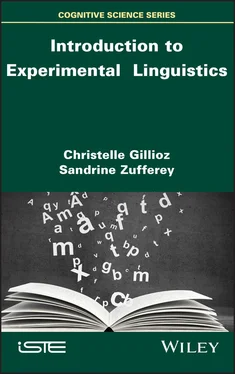


![Andrew Radford - Linguistics An Introduction [Second Edition]](/books/397851/andrew-radford-linguistics-an-introduction-second-thumb.webp)


